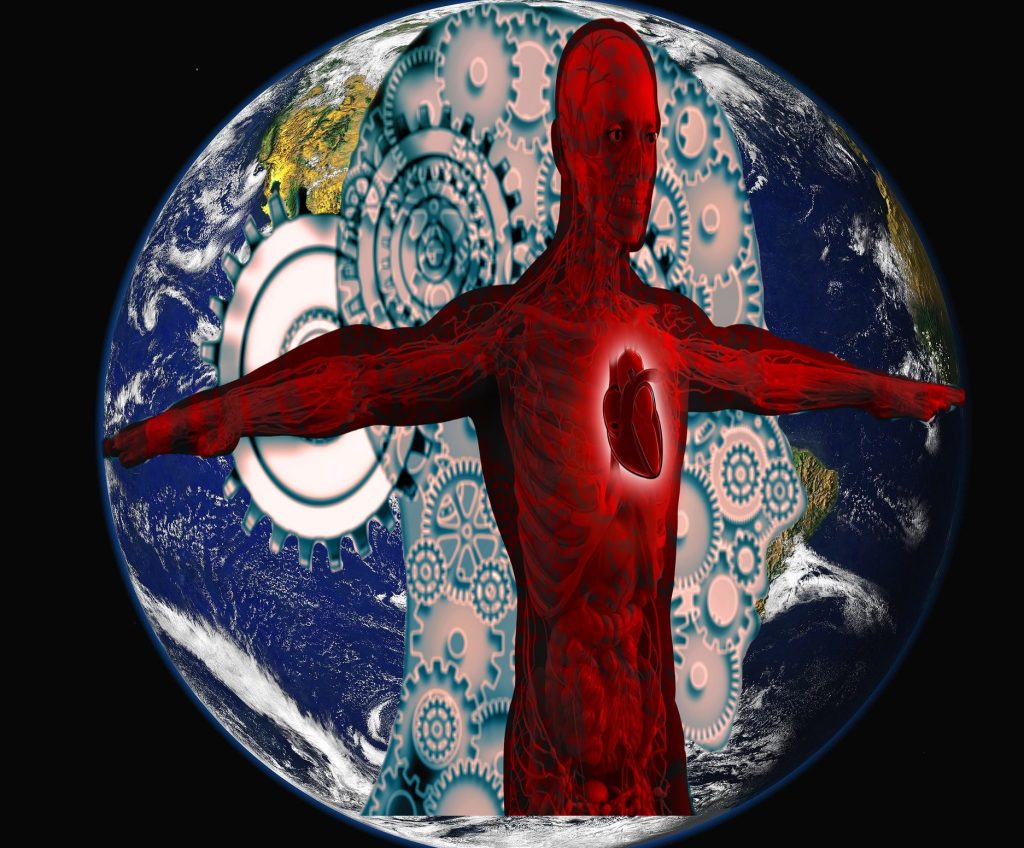“For the rhythm of life is a powerful beat – Puts a tingle in your fingers and a tingle in your feet” (Lyrics from the song -listen below)

Learn to be Mad, to be Howling Wild
to be the Earth Mother’s Child &
to Walk with the Elements Around You
Celtic Earth Spirit has used the above motto for several years now. It is the summation of one of the tenets of Animism – we are a part of nature and we are deeply connected to the Earth.
Modern life in our towns and cities, divorced from the natural world, has robbed us of the understanding of just ‘how deep’ this connection is – the whole fabric of our very being, our biology is geared to this connection.
We are ‘geared’ to walk with the Elements around us – What happens when we ‘engage our gears’?
Our ancestors had this knowledge – their lives were connected with the Earth & nature, they lived as one with it, within it, felt it and moved with its rhythms, they not only knew how to listen to the Earth, they knew how to hear Her. What we can learn from this is important to our lives today. We are not trying to turn the clock back and attempting to live how they did; we wouldn’t survive their lifestyle. Learning from, not only our ancestors, but Mother Earth herself and nature, regaining our intrinsic connection can help us to survive in our lives today.
GDPR Compliant
It is a paradoxical travesty that whilst science is developing ways in which we can understand, explain and prove these connections; we are losing the ability to actually connect with them. We are still affected by the same energies & rhythms, but because we have no sense of the connection, we do not realise. We have no understanding of the importance of being in harmony with the rhythms, as a result we become dysfunctional and ‘dis-eased‘. We need to combine both the knowledge and our intuitive connections – we need to learn how to ‘feel‘ again.
We need to engage! – we need to put ourselves into gear and go.
Circadian Rhythms
Most of us have come across the fact that we have a ‘body’ or ‘biological’ clock – we actually have several – our biological clocks are groups of interacting molecules in cells throughout the body, however we have a ‘master-clock’ – a group of nerve cells – situated in the brain (the suprachiasmatic nucleus, or SCN) which is located in the hypothalamus, an area just above where the optic nerves cross. This consists of around 20,000 nerve cells and co-ordinates all the bodies clocks so that they are all working in sync. These biological clocks drive our circadian rhythms.
Circadian rhythms – put simply – are physical, mental and behavioural changes that follow a roughly 24-hour cycle, responding primarily to light and darkness (with our ‘body-clock’ at the steering wheel) in our environment. They are found in most living things, including animals, plants and many tiny microbes. We also have genes that direct these circadian rhythms. The study of circadian rhythms is called Chronobiology.
Although circadian rhythms are endogenous (“built-in”, self-sustained), they are entrained (adjusted) to the local environment by external cues, these are called zeitgebers (German, meaning “time giver”) – they include light, temperature and redox cycles (regulation of metabolic processes and cell function, defects are central to cancer, wound healing, fibrosis, cardiovascular diseases, diabetes, and neurodegenerative diseases). If we allow ourselves to get out of ‘sync’ with these rhythms we literally make ourselves ill.
Physical, Mental & Behavioural
Our bodies are intelligent – our master clock (the SCN) ensures that the right circadian rhythm is running at the right time of day – why is this important?
Even the best multi-tasker would be unable to function if they had to undertake all the tasks that they have to do in a day, all at the same time, all the time – many of our bodies systems take a lot of energy to function, expecting our bodies to run these systems at the same time causes conflicts in energy usage, meaning that systems may be running on ‘half-energy’ and thereby not functioning properly. Learning ‘how to listen to our bodies’ is a vital first step in regaining our lost knowledge.
What do these circadian rhythms control?
- Sleep/Wake Patterns
- Energy/Food Cycle
- Hormone Release
- Body Temperature
- Blood & Heart Efficiency
- Brain Chemistry

Our Circadian Rhythms are only one of the ways in which we are wired to ‘Walk with the Elements Around Us’
References:
- https://www.nigms.nih.gov/Education/Pages/Factsheet_CircadianRhythms.aspx
- https://en.wikipedia.org/wiki/Redox#Redox_reactions_in_biology
- https://www.ncbi.nlm.nih.gov/pubmed/24450621
- Source: Boundless. “Circadian Rhythms.” Boundless Psychology. Boundless, 25 Aug. 2015. Retrieved 07 Oct. 2015 from https://www.boundless.com/psychology/textbooks/boundless-psychology-textbook/states-of-consciousness-6/sleep-and-dreaming-42/circadian-rhythms-181-12716/
- Food Triumph: The knowledge that puts you in charge of your health & weight! By Aleksandar Udev – https://books.google.co.uk/books
- https://learn.genetics.utah.edu/content/inheritance/clockgenes/